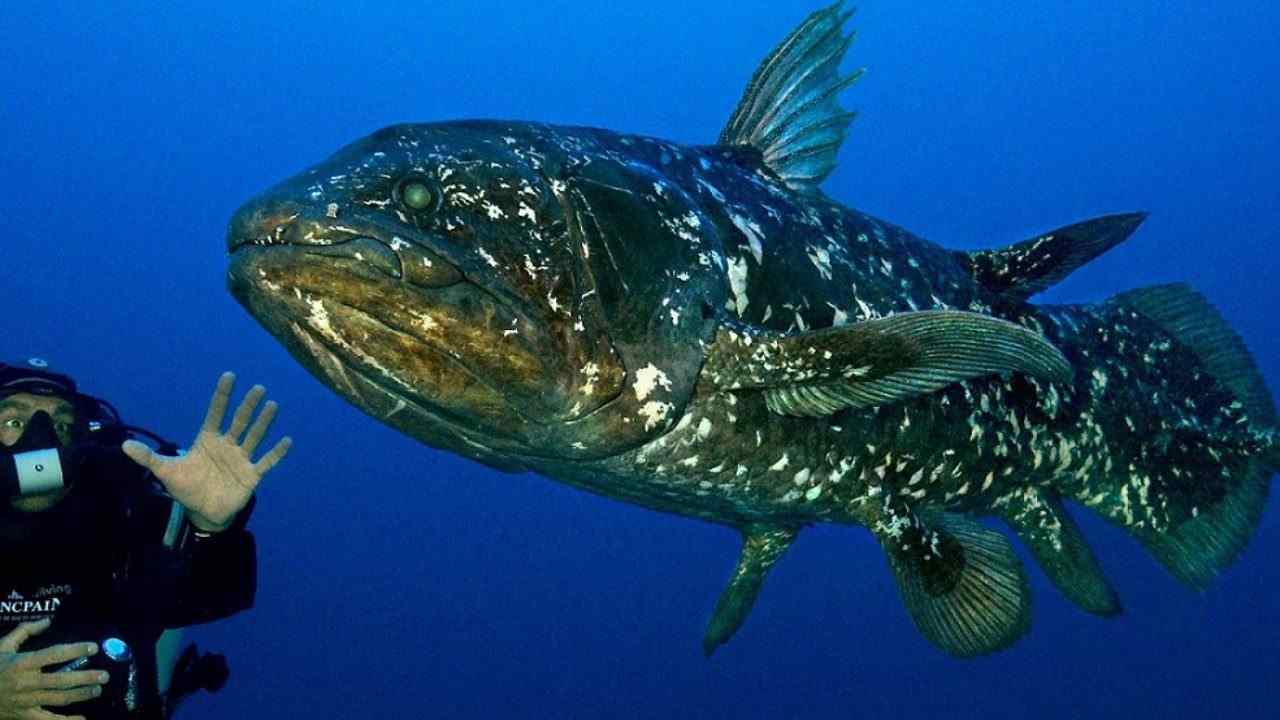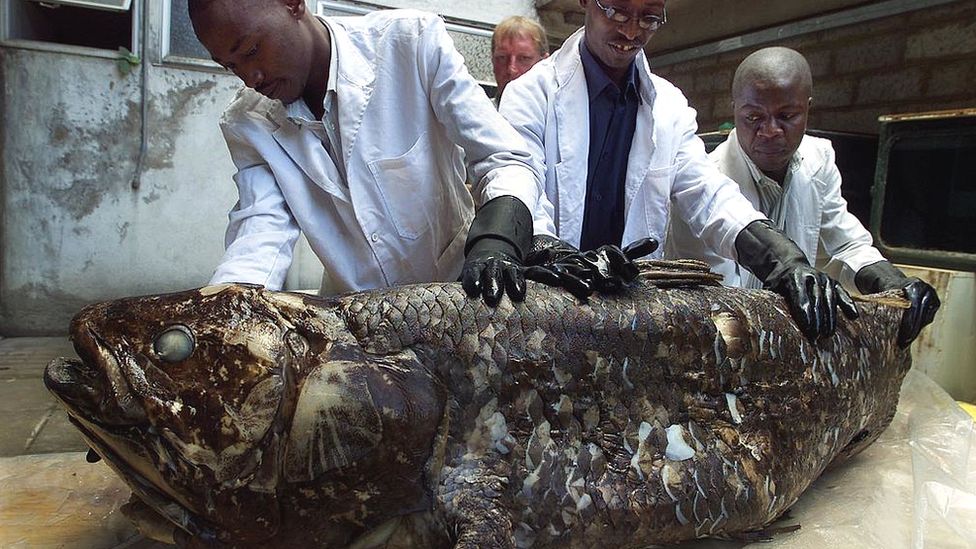
The coelacanth – a giant, mysterious fish that has survived since the time of the dinosaurs – can live for 100 years, a study has found. It also indicates that their pregnancies are for at least five years.
What is the coelacanth?

Coelacanths or Latimeria are “living fossils”. Living fossils are animals similar to fossils and typically have no close living relatives. Coelocanth is a slow-moving and slow-growing fish that grows to be the size of humans. They have been around for 400 million years. Naturalists thought they were extinct. However, they were found alive off the coast of South Africa in 1938. Previously scientists believed that they have a life span of 20 years. Coelacanths are endangered animals. Hence, only dead specimens can are studied.
New discoveries about the Living fossil
French scientists conducted a study using the same technique used to date commercial fish. They calculated that these animals live for almost 100 years. The study, published in the journal of current biology on June 17. Previously their ages were determinedby counting big lines on their scales. However, the researchers discovered that smaller lines were only visible under polarized light. “polarized light revealed five smaller lines for every big one,” said Bruno Ernande, a marine evolutionary biologist and the co-author of the study. Their study indicated that the small lines correlated to a year of the coelacanth’s age. Their oldest specimen was 84 years old!
Moreover, females of the species do not sexually mature until their 50s. But, males are sexually mature between the ages of 40 and 69.
A surprisingly long pregnancy
The study also included a detailed analysis of two embryos. It revealed that they were five and nine years old. It indicated that pregnancies in coelacanths were for a minimum of five years. “The five-year gestation is “very strange” for fish or any animal,” said Harold Walker, a researcher from Scripps Institution of Oceanography in San Diego, California. “They might have evolved similar life histories as sharks and rays because they are sharing similar type habitats,” he added.
